What does the Transcendental Meditation technique mean to Black meditators?
“Supreme quiet and calm,” for an executive producer and director. “Inner strength and stability,” for a psychologist and psychotherapist. “Deep peace and freedom,” for a self-described mindset evolutionary. Cardiovascular health with “calmness, forgiveness, and loving-kindness,” for a retired nurse. “A way to blossom and thrive,” for the vice president of a communications group. “The greatest gift we can give ourselves,” for a pro boxer and martial artist.
These TM meditators and teachers in Los Angeles have come together with others to share such benefits with the Black community. Breathe Again with TM is their ambitious new pilot program to offer relief from the stress and trauma of health care disparities, high rates of COVID-19 infection and death, and systemic racism. The ultimate goal? To help one million Black Americans heal, experience inner peace and wellness, and empower themselves from within through the TM technique.
To support this timely initiative, the national TM organization, Maharishi Foundation USA, is offering the TM course to Black Americans in the Los Angeles area at the lowest instruction fee. Scholarships are available as well.
The ultimate goal? To help one million Black Americans heal, experience inner peace and wellness, and empower themselves from within.
To tell the story of this remarkable and much-needed effort and how it came to be, I spoke with its all-volunteer founding members by phone in January. Their experiences and insights reveal the unique power of the TM program to heal and empower the Black community.

Breathe Again with TM founding members: Djakarta Jacobs, Sibongile West (Chair), Dr. Rashied Jibri, Jerome Buchanan, Kathryn Melton, Angelique Fawcette, James and Nina Meade, and Maria Perser
“We Stand with You, and We Pledge to Work as Allies”
When TM Centers closed their brick-and-mortar places for the pandemic, Los Angeles TM teachers James Meade, Ph.D., and Nina Meade, M.A., began offering daily online Group Meditations for area meditators. At the beginning of the afternoon sessions, Nina shares a few minutes of news, inspiration, and knowledge.
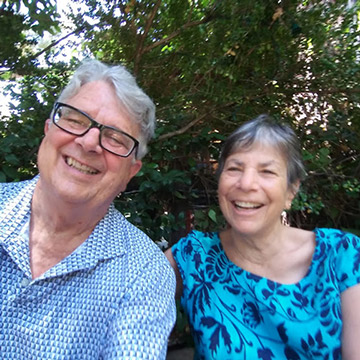
James and Nina Meade, Certified TM Teachers, Encino, California
Last June, she read a letter from John Hagelin, Ph.D., National Director of the U.S. TM Program and President of Maharishi International University, to the TM and MIU communities about the national and worldwide demonstrations protesting George Floyd’s death in police custody:
“We reach out with our hearts to the family of George Floyd in sympathy for their loss. And, through them, we reach out to all Black families across the country for the unconscionable losses and pain they have endured for hundreds of years,” Dr. Hagelin wrote.
“To our Black community, please know that we stand with you, and we pledge to work as allies to support you and to create an even more inclusive organization,” he wrote. “For more than 60 years, the stated aim of our non-profit educational organization has been to apply Consciousness-BasedSM approaches to end suffering and hatred, and promote the principle ‘the world is my family.’ We have worked many years with this aim in mind, but we know there is even more we can do.”
The Los Angeles online group then meditated. During the “open mic time” for questions and comments, people are usually quiet, Nina says. “But at the end of that day, there was animated discussion about the George Floyd protests and Dr. Hagelin’s letter.”
“For more than 60 years, the stated aim of our non-profit educational organization has been to apply Consciousness-Based approaches to end suffering and hatred, and promote the principle ‘the world is my family.'” —Dr. John Hagelin, Director, U.S. TM organization
For Djakarta “Deena” Jacobs, hearing Dr. Hagelin state that the national TM organization “wanted to stand strong and welcome its Black members” was revelatory: “I found that to be really inspiring. So I suggested that they could do something, by offering Transcendental Meditation to a million members of the Black community, subsidized by fundraising.”
The idea sparked great interest, so the Meades arranged a breakout session for area meditators and Black TM teachers to gather online. “We’ve been meeting every Sunday since then,” Nina says.
Breaking Spiritual Chains and Healing Generational Trauma
“Nina and Jim are so good at creating a space for fellow meditators to come in and learn and ask questions and share their stories and experiences,” says Djakarta “Deena” Jacobs, self-described mindset evolutionary, who started TM in November 2019. “This is what Black people need. We need this other space of Transcendental Meditation. This is the answer.”
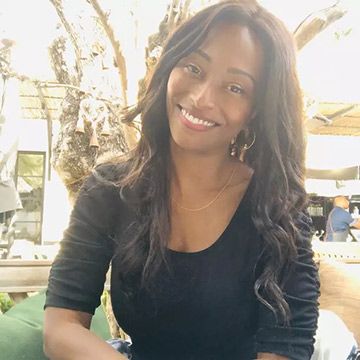
Djakarta “Deena” Jacobs, Mindset Evolutionary
In the wake of George Floyd’s death and mass protests, “my people were really hurting,” Jacobs remembers. “In groups where we were discussing the aftermath, people were talking about how anxious and stressed they were. They didn’t know what to do. I felt helpless, but I wasn’t having the same types of feelings or reactions. There was a difference in general in my life, and it was that Transcendental Meditation had given me a peace, a deeper peace than even when I was doing things such as yoga and therapy.”
The “solutions oriented” Jacobs realized that with “a million Black people meditating together, we could create this community, and it would contribute to the Maharishi Foundation’s goal of world peace.” Raising funds to defray the cost of the TM course would “open it up for everyone and really help people. I wanted to make this a more tangible thing than just these companies that say, ‘Oh, we support Black Lives,'” she says.
Breathe Again with TM can “create a space where Black people can heal, because we have a unique set of needs,” she believes. “My family descended from slavery. There’s a generational trauma. My people, we may be free physically, and we may be free mentally, but are we free yet spiritually? Those are the chains that still need to be broken. We carry that trauma in our DNA. And Transcendental Meditation is one of the best ways to release that trauma from our genes, to break those spiritual chains, in my opinion.”
“If Black people can find peace on a soul level, on a spiritual level, through the TM technique, then that will help us to get the other things that we need to be able to manifest.” —Djakarta “Deena” Jacobs
“We’re all ‘always moving towards freedom, in a true, deep sense of the word, to be completely free. When you’re at peace, you’re free, and when you’re free, you’re at peace,” she says. “If Black people can find peace on a soul level, on a spiritual level, through the TM technique, then that will help us to get the other things that we need to be able to manifest, the tangible things that we need to increase.”
Jacobs is moved by the support Breathe Again with TM has received from Dr. Hagelin and Maharishi Foundation USA: “I see that there is an organization that actually does care and does want to see Black people heal completely and be free and have peace. That feels really amazing, and I’m looking forward to us manifesting a new reality.”
The Power to Heal and Expand Unity from Within
“I am thrilled to be here, and frankly today brings me great relief and solace that something like this is finally happening on a good scale,” began Dr. Hagelin in his keynote talk for the Breathe Again with TM inauguration on October 25, 2020, an online launch party featuring founding members, special guests, and musical performances.
Dr. John Hagelin, President of Maharishi International University and Director of Maharishi Foundation USA
Dr. Hagelin acknowledged decades of work by African American teachers of the TM program and others who have “dedicated themselves to bringing the life-changing benefits of the TM technique to as many people in the Black community as possible, and also underserved people across the board.”
With the “wakeup call” of the past year about how much racism still exists, “the entire public—even the entire world watching the United States—is waiting for people to step up with answers and to do something that will really have an impact,” he said. Breathe Again with TM is “so powerful and so timely” because it offers profound healing and relief, for individuals and society.
“The depth of healing that takes place when one goes to the depths of one’s inner Self, and discovers reservoirs of inner strength, and dissolves a tremendous amount of stress and anxiety—that is a tool every human being should have,” Dr. Hagelin said. “But for those who suffer an additional burden of oppression, who live with prejudice and have lived with it, this is, I think, an extremely powerful tool.”
The TM program can also help eliminate racism itself: “The reason that racism exists, I’m convinced, is that it is rooted in the narrowness of vision that comes with a stressed brain.” When the brain is in “the fight-or-flight response, the higher brain is shut down and the primitive or reactive brain takes over.” When the physiology is focused on survival and fear of others, “anyone who doesn’t behave like you, doesn’t believe like you, doesn’t look like you, everything is a threat,” he explained.
“When consciousness is more expanded, when comprehension is expanded, that narrowness of vision—which draws differences and creates boundaries where boundaries aren’t needed, which brings fear of others—dissolves.” —Dr. John Hagelin
Racism is “a disease of the mind” rooted in stress, Dr. Hagelin said. “It is the mind’s inability to understand what is the scientific fact in this modern, scientific age, which is the fundamental unity of life, the fundamental unity of humanity. That is what life is like when the brain is functioning the way it is designed to function.”
The TM technique dissolves stress and allows the brain to function with greater coherence, while expanding awareness and consciousness itself. In turning the attention within during TM practice, “the narrowly focused and very cramped ‘horse blinds’ that everybody has on as a consequence of stress, start to relax as the awareness expands. In the process of diving deep within, we expand consciousness. And when consciousness is more expanded, when comprehension is expanded, that narrowness of vision—which draws differences and creates boundaries where boundaries aren’t needed, which brings fear of others—dissolves,” explained Dr. Hagelin.
This natural process of “expanding unity quietly within, and bringing that unity, harmony, and love out into your activity as a simple consequence of letting the mind gain that deep rest, and letting consciousness expand the way it naturally does when given an opportunity, will be transformational for all Black Americans suffering, and all Americans causing the suffering, and also, I would say, suffering themselves,” Dr. Hagelin said.
A History of TM Teaching and Scientific Research in Black Communities
Sibongile West is one of the TM teachers who have been bringing the technique to Black communities for decades. As chair of the Breathe Again with TM executive committee, she continues the U.S. outreach begun formally in 1969, when TM Founder Maharishi Mahesh Yogi supported the formation of an organization dedicated to teaching the TM technique in communities of color, which established Centers across the country. (See “Celebrating 50 Years of Teaching TM in African American Communities, 1969–2019″.) Since 2005, the David Lynch Foundation has also continued this work in underserved communities.

Sibongile West, Vice President, Young Communications, and Certified TM Teacher
“There’s always been keen interest to reach out to Black populations because of the issues surrounding health disparities and other issues that TM can help address. We’re not just joining the bandwagon now,” she says, praising the support of Dr. Hagelin and the national organization. “This isn’t a Johnny-come-lately, Black Lives Matter quote from a corporation. There has been work for quite a while, and it was Maharishi who opened the door.”
The time is ideal for Breathe Again with TM, West believes. The COVID-19 pandemic has exposed systemic health disparities and inequities for Blacks, who are three times as likely to become infected as Whites and nearly three times as likely to die, adding enormous stressors to already stressed Black communities.
“I can attest to what that’s like, in terms of having three family members who have passed away, and four friends who have COVID or have had it,” West says. “That’s a lot of people, and that’s typical for Black folks right now.” As Vice President of Young Communications, West and the firm are slated to bring their expertise and experience to advise Johnson & Johnson on making its vaccine campaign more impactful in Black communities.
The time is also right because of the national and worldwide protests for racial justice. “I’ve been marching and demonstrating since the 1970s, and this was the first time we’d ever seen anything like that. I just felt, ‘Oh my God, that’s utterly amazing.’ It was a huge healing to watch all these people from all walks of life demonstrating,” she says.
West has been experiencing the benefits of TM practice for Black lives since she started at age 16. “Going from teenage angst to teenage bliss overnight, that’s what really woke me up to what TM is. And when my family started, our whole dynamic changed. It was just peaceful in the household, and we started really enjoying each other—which was far different than what had happened before,” she remembers, adding that they all experienced health improvements as well.
“This sense of peace, this sense of enjoyment and happiness, is not something that most people ever get to experience. That’s when it became clear to me that this is something that Black people could benefit from,” she says. West became a TM teacher at the historic 1973 international training course with Maharishi that was held in Ethiopia for African Americans and Africans, and she has been teaching ever since.
“This sense of peace, this sense of enjoyment and happiness, is not something that most people ever get to experience. That’s when it became clear to me that this is something that Black people could benefit from.” —Sibongile West
West also points to the long-standing commitment of the TM organization to scientific research on the health benefits of the TM technique for Blacks, who suffer higher rates of heart disease, hypertension, and diabetes than other groups. Out of 429 peer-reviewed TM studies to date, there have been 54 studies on African Americans (PDF), most of them randomized-controlled trials on heart disease and hypertension.
What gave West an even deeper understanding of the power of the TM technique was teaching in a research study on the effects of TM practice on carotid atherosclerosis in hypertensive African Americans at Charles Drew University of Medicine and Science, an historically Black graduate school in Los Angeles. “It was planned for six months, but the study was so successful, it went for two years,” she says.
The participants in West’s group also had diabetes and were there at their doctors’ urging, not out of an interest in the TM technique. “But when they learned, they absolutely blossomed,” she remembers.
Three months into a year of meeting with the group, an elderly man in his 80s asked West if he could make an announcement. “His hands were shaking as he pulled a piece of paper out of his pocket,” she remembers. “He said, ‘I went to the doctor for my regular checkup. I’ve had diabetes for 53 years, and these people were telling me they can no longer find it. I don’t have it anymore.’ He’s crying, and people are jumping up trying to see the paper. ‘They’re going to be monitoring me for the next year, but they’ve taken me off everything. And the doctor wants to know, what am I doing? And I told him I just sit with my eyes closed twice a day. They gave me something that I can think, but that’s all I do.'”
The Charles Drew study wasn’t looking at the effect of TM practice on diabetes, but by the end of the year, almost half the people in West’s group had reported that their doctors had taken them off insulin injections or they’d gone from injections to the pill. “This wasn’t just a research study. These were lives being completely changed,” West says.
A Tool for Heart Health—Cardiovascular to Loving Kindness
Kathryn Melton, a retired nurse and pharmaceutical representative who has struggled with hypertension, was attracted to the TM technique because of the research on its cardiovascular benefits. “With my medical background, the data is what really encouraged me to try it,” she says.
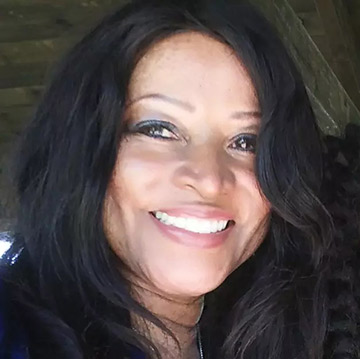
Kathryn Melton, retired nurse and pharmaceutical representative
When she took the TM course a year ago, after being familiar with mindfulness and guided meditations, she felt right away that “this is definitely something different. I just felt a deeper rest, a deeper peace, and immediate energy. TM was a profound experience from the very start, and I’ve been faithful to it ever since.”
Now her blood pressure is under control. “I just saw my cardiologist the week before Christmas, and she asked me, ‘What are you doing?’ Because we had been doing everything—the exercising, the medication, and everything I was supposed to do,” reports Melton.
“The only thing that is different in my regimen is the addition of Transcendental Meditation,” she told her cardiologist, who was aware of the studies on TM and its cardiovascular benefits. When Melton asked why she hadn’t mentioned it to her, her doctor said, “You know, Kathryn, most people would rather just take a pill than hear about this kind of treatment option.” Melton recognized the truth in this but believes people should still be told about the TM research.
On hearing about Breathe Again with TM, her cardiologist “was absolutely over the moon and wants to support us,” Melton says. “I think it’s just a matter of getting information out there to people, because the benefits of TM are so far-reaching and can really help improve people’s lives.”
“I just felt a deeper rest, a deeper peace, and immediate energy. TM was a profound experience from the very start, and I’ve been faithful to it ever since.” —Kathryn Melton
When Melton talks about the technique with her own friends and family, she finds they’re interested to learn that “TM is not something new. This is an ancient technique that is now backed by science with a lot of data to show its efficacy, both physically, mentally, and spiritually.”
During the past turbulent year, “particularly in the spring with COVID and the George Floyd situation, an attitude of calmness and not being sucked into the drama has been so beneficial for me, and I know for other meditators as well,” Melton says. “A lot of the African American meditators were saying, ‘We’ve got to do something to help our community, because it’s just really looking so bleak right now. What can we do?’ And that’s when we started this initiative.”
The Breathe Again with TM committee plans to get people talking by having celebrities, athletes, and others who are recognized in Black communities talk about the benefits of TM. “We’re really just trying to make a lot of noise right now to increase awareness. And when we increase the awareness, we’ll increase the participation, and we’ll get to that goal of improving lives with TM,” she says. “I just want other people to experience this peace and calmness, this spirit of forgiveness, and this loving kindness. What will help us get through this madness? TM seems like the perfect tool for that.”
“Inner Hygiene” as the Foundation for Strength and Resilience
Rashied Jibri, Ph.D., as a psychologist, psychotherapist, and TM teacher, has a unique perspective on the needs of the Black community and how the TM technique can help. As a teenager he had been a gang member, but he started TM “at a relatively young age, 24, and that allowed me to find some stability in my life,” he says.
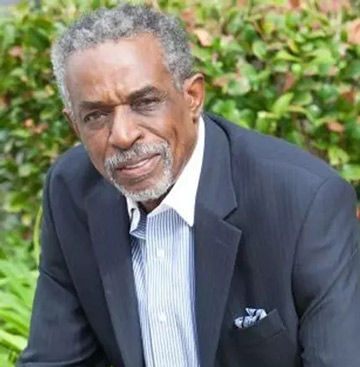
Rashied Jibri, Ph.D., psychologist, psychotherapist, life coach, and TM teacher
Dr. Jibri became a TM teacher in the early 70s and taught with West and others in Black communities, including in the Charles Drew cardiovascular study. He believes the TM technique is a true panacea, but because the practice is so easy and the effects are spontaneous and natural, “it’s not always understood that this is what’s going on.”
Once, after Dr. Jibri gave an introductory TM talk, a man came up and asked, “I’m unemployed and my family’s hungry—will TM put food on my table?” Dr. Jibri says he answered, “Well, no, it’s not going to put food on your table. But right now you’re under a lot of stress, a lot of anxiety, a lot of uncertainty, and what you need is something to stand on. Even though you can’t see it, you need something to stand on to give you that strength to move forward, to give you that clarity, to find certain avenues to help you within the situation that you’re in.”
For these reasons, Dr. Jibri recommends TM practice “as a baseline, as a foundation for everything else. It’s even more basic than lifestyle,” he says. “I call it inner hygiene. Regardless of your belief system and lifestyle, you’ve got to take care of yourself. You’re going to brush your teeth and bathe and do your usual morning routine before you go out into the world. So TM is a part of that.”
Practicing TM won’t stop racial and social injustice, “but it structures resilience. It provides a sort of protection from the anxiety that is developed from the experiences of social injustice,” Dr. Jibri explains. “So these things will occur, but how strong is that individual, how much inner fortitude do they have so they can maintain their stability and still function in society, and have more clarity to look at solutions to the various issues that they’re faced with—that grows and strengthens.”
Dr. Jibri has encountered a lot of racism in his own life, “but because of TM, experiences of discrimination don’t sink down into the fiber of my constitution and cause me to react. When you have something on the subconscious level—I am looking at this from a clinical standpoint—things will trigger various emotions, and those emotions can be very loud or aggressive. Whereas when you have some inner stability and resilience for protection, then when you do come across that same contact or issue or event, you don’t react so vitally to it.”
He explains what he sees as three types of racism: blatant, systemic, and unconscious. “Growing up in the inner city in Los Angeles, it was just very blatant, in-your-face racism,” he says. “Now unconscious racism could be individuals who consider themselves liberals. If I go into a supermarket in a neighborhood where there are few Black people, the clerks are very cordial, but they’re still on guard because a Black man has walked in. They could be very liberal, but they feel the need to follow you around the store.”
TM practice is “a baseline, as a foundation for everything else… I call it inner hygiene. Regardless of your belief system and lifestyle, you’ve got to take care of yourself.” —Dr. Rashied Jibri
When Dr. Jibri worked in corporate America, he encountered systemic racism: “Often in management meetings, I was the only Black man in the room. When they were doing some problem-solving, I would offer a suggestion that resolved the issue, but it would be totally ignored. Then a few weeks later, I would see that what I had suggested is what was being done, but there was no credit given to me.”
Some people might walk out of the meeting and quit, “but then I would be hurting myself. Practicing TM gave me that inner strength and inner stability to spontaneously make the right decisions,” he says.
The TM technique provides a kind of protection: “It’s just a very subtle, general protection that needs to be there, so the functionality of Black individuals can grow and prosper,” says Dr. Jibri.
The Power of TM to Change Your Mindset
The TM technique provides “a supreme quiet,” says Angelique Fawcette, a CEO, director, executive producer, and producer for Archangel Films LA, who learned TM a few years ago with Nina Meade. “It’s something that other meditations don’t provide for you, and it always leads to that peace and then that calm.”

Angelique Fawcette, Director, Executive Producer, Archangel Films LA
This inner peace is the key to how the TM technique can offer healing and strength for Black Americans. “When you are in a situation where you’re being discriminated against, anyone’s normal reaction is usually great pain. Transcendental Meditation really provides just a steadiness of spirit. It doesn’t allow that experience to get so deep under your skin. You see it as an experience, and you keep on moving,” Fawcette says.
With the pandemic lockdowns and “the very intense social change that occurred with just simply being Black,” tensions became more heightened, she remembers. “Even if you’re a TM meditator, there’s going to be anxiety. Leaving my house, I had to think, ‘OK, am I going to be safe?’ Let me just intend that I’m going to be safe on my trip to the store or getting gas or going out to work, with a lot more intention than I would normally.”
That’s when her TM practice really came into play. “TM helped me not feel it so intensely. It calmed me down. Your mindset changes to where, even though you go through this, you now have the strength to get up and go back out there and handle it. Without getting mad or upset about it, you are able to handle it appropriately and maybe change it into something positive.”
“I really believe that Transcendental Meditation is so powerful in helping people change their mindset, and become more powerful, intentional, loving beings.” —Angelique Fawcette
Fawcette is glad that more people are starting to understand what Black people experience. “My husband is White, and he has to watch me go through the discrimination and the pain that you feel. The really sad part is that it feels like a regular part of life for us, so you get used to it,” she says.
Being a professional in the film industry has not protected Fawcette from prejudicial treatment. “I’ve been pulled over by the police. I’ve had guns pointed at my head. I’m a Black woman, and I think I hold myself pretty well—I’m not wearing gangster outfits or anything like that. I didn’t need to be pulled out of my car. It was pretty scary for me. But with the calming that Transcendental Meditation provides, the fear eventually goes away. You don’t forget it, but it goes away,” she says.
“For many Black people, that happens to them once, and they believe that they’re going to be discriminated against forever. But that’s not true. That’s not the way it’s going to be, because not everyone is hateful,” she adds.
“When you learn this process and become a meditator, it really does change your life,” Fawcette says. “I really believe that Transcendental Meditation is so powerful in helping people change their mindset, and become more powerful, intentional, loving beings. Call me idealistic, but I do believe with all my heart that there will be a point where things change. So I hope that as many people can learn TM as possible, as many Black people and as many people as possible.”
Changing the Trajectory of Young Lives
Maria Perser, M.A., is Professor and Chair of the Psychology Department and Addiction Studies Program at Los Angeles Pierce College, a two-year public college and transfer institution attended by many students of color. “This is where I can have the biggest impact. We have this avenue of TM that we could bring to our students. They’re 20-year-olds. If they could learn TM now, it would change the trajectory of their lives,” she says.
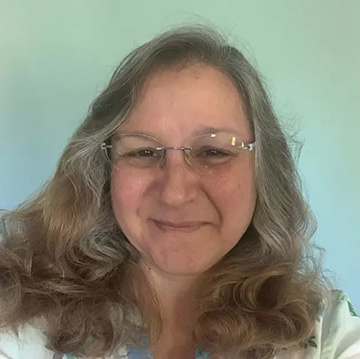
Maria Perser, M.A., Assistant Professor of Psychology, Los Angeles Pierce College
Like other founding members of Breathe Again with TM, Perser participates in Nina Meade’s afternoon online Group Meditations and was there the day Dr. John Hagelin’s letter sparked this idea. “I felt like, it’s good that we’re doing TM, but wouldn’t it be great if we could provide this for all of Black America? We know that this works, we know that this will help, so why can’t we offer this? So we started meeting,” she remembers.
Perser has also joined the social justice committee for her teachers union. “I’ve just started getting much more involved, because I feel like this is the time,” she says. “Enough with being a bystander. I need to be in the trenches. I need to be doing this, because I feel like it’s super important.”
Perser has struggled with anxiety but didn’t want to go the medication route. After conversations with a colleague who is a longtime TM meditator, Perser decided that “learning TM would be my gift to myself for my birthday. This was something that I really wanted to do for myself.” She’s been practicing TM for just over a year now.
“It’s a godsend. My very first time meditating, I felt this huge rock lifted from my shoulders, this huge sense of relief. And every time I do my TM, I feel that sense of relief. I can’t tell you how thankful I am.” She used to get panic attacks, “but now if I feel my heart rate go up, I’m able to be more cognizant and see, ‘It’s just a wave. It’s OK.’ It doesn’t go into full-blown panic mode. I know that I can get through this.”
She’s also found her TM practice to be invaluable through the pandemic, with “pivoting to completely online teaching” while being department chair and navigating the needs of her faculty and students. “TM is grounding for me. It’s my way to just go within and find that center and know I’m good. Everything is the way it should be. This is where I need to be.”
“My very first time meditating, I felt this huge rock lifted from my shoulders, this huge sense of relief. And every time I do my TM, I feel that sense of relief.” —Maria Perser
Perser looks forward to sharing benefits such as these with as many people as possible through Breathe Again with TM. “We have the infrastructure in place for this to blossom across the nation. But right now the focus is on L.A., to get as many Black individuals learning TM and meditating as possible,” she says. “What I’m hoping to see is that there’s a shift within the Black community, and healing can begin.”
“Giving Ourselves Back to Ourselves” to Radiate Wholeness
For Jerome Buchanan, a professional boxer and martial artist, the civic turmoil following George Floyd’s death, on top of what was already happening in the Black community with COVID, inspired him to see things more clearly. “It put me in a place where I knew that everything that we’re looking for is an ‘antidote to violence,’ which is the title of a book about TM and peace. I believe that this is what we need, as a people and as a nation, in order to get better within ourselves,” he says. (See “An Antidote to Violence: How the TM Program Helps to Bring Peace and Heal Divisions.”)

Jerome Buchanan, professional martial artist and boxer
How can the TM technique help the Black community? “The number one way it helps is by giving time to ourselves. If we don’t go within, then we go without. If we are not good with ourselves, if we can’t sit in a room by ourselves and close our eyes and have those moments, we’re going to bring that same kind of negativity or duality into the world,” says Buchanan. “Once you give time to yourself, once you have dedicated an intention to do that, it puts you in a place where you can find that peace within yourself. And when we can do this ourselves, then it makes the world better.”
When he started TM in 2017, “everything changed. I went from an outward-based experience to an inward-based experience. Now I live from the inside out, and that has just transformed my entire world, and everybody around me.”
Buchanan explains how this has worked for him. “I always look at it from my own perspective, because I was very angry. I come from the inner city in Michigan, where there’s a lot of tension, and a lot of blame as well. My level of acceptance was very, very low before TM came into effect,” he says.
“We’re all being programmed to have a ‘lack’ mindset, or limiting self-beliefs. And that means needing something outside of ourselves to make something inside of us feel good. But once you get to a point where you’re going within, then you’re not blaming anybody else for what’s going on. There’s a real level of acceptance that you have and this feeling of wholeness from doing TM—and then there is no lack,” Buchanan explains.
That experience of wholeness then affects how you influence and interact with everyone, he says: “When you have that experience of wholeness, you take that with you everywhere you go. You radiate that energy. It’s a palpable, visceral effect, and it brightens everybody’s day. Like you have the light within you, and you’re bringing it and showing people. We’re like Care Bears, is how I always look at it—shooting love out of our chest to each other, back and forth.”
“When you have that experience of wholeness, you take that with you everywhere you go. You radiate that energy. It’s a palpable, visceral effect—and it brightens everybody’s day.” —Jerome Buchanan
Now the TM technique is the universal tool in his toolbox. “If I’m a master mechanic and I only use the hammer, then everything’s going to start looking like a nail. There are other tools I would like to use, and TM is the universal tool that I can use for everything. If I meditate first, and then I go do what I have to do, I’m going to bring my whole self with me into this next act,” he says.
“TM is the greatest gift that this planet has to offer—giving yourself back to yourself. And when you have that, then your ‘giant’ walks around with you everywhere you go. And when your giant is with you, then who can really be against you?” he says.
“I want to be a TM teacher as well,” adds Buchanan, who is completing the requirements to enroll in the TM teacher training and certification program. “I’m so excited for the journey of just being able to teach this wonderful technique to other people, and bringing them to themselves. This is something that I want to be a part of for the rest of my experience.”
Building Community and Generational Joy
Breathe Again with TM grew out of meditators meeting together for the online Group Meditations hosted by Nina and James Meade. “That’s been a wonderful thing during COVID, because it’s a community,” says Angelique Fawcette. “And when you meditate together, for some reason it’s more high-vibrational. It’s pretty awesome, and I highly recommend it.”

Breathe Again with TM seeks to expand generational joy for Black families and communities
Plans for Breathe Again with TM include similar community support and follow-up for Black meditators. In addition to connecting meditators with their local TM Centers and introducing activities such as Group Meditations and half-day retreats, they plan to hold quarterly knowledge days “that will strengthen Black meditators in their personal growth and TM practice. We would also like to include local community efforts, so that we can speak to community issues and how TM can help solve them,” says Sibongile West. They also hope to inspire the next generation of TM teachers, as Jerome Buchanan has been inspired.
With the ultimate goal of teaching the TM technique to one million Black Americans, Breathe Again with TM needs to be known far and wide.
“It’s essential for Black people to know that TM exists, from kids to adults to elders—especially the kids,” says Fawcette. “If kids have an avenue to realize that they don’t have to be stressed-out and anxious, that’s going to do so much for Black people in general, because that’s the next generation.”
West paints a picture of what’s possible by looking back to her own early days as a TM teacher in the Black community: “People were struggling, not so much financially but just in terms of the issues that were piled on them—which are the same issues that are piled on now. But when Black folks began TM, we started really bearing witness to the level of bliss and love and sense of peace that people could have in these communities. That was the seed of it all for me, in my own natural observation of myself and my family and the community.”
Together, the multigenerational and multiracial founding committee and the growing membership of Breathe Again with TM are blazing a path to an inspired new future for the Black community and our whole American society. Through their efforts, we can envision a world in which age-old divisions and injustices have given way to a more harmonious and nourishing culture, based on the expanded consciousness, resiliency, creativity, and joy of its citizens.
“When Black folks began TM, we started really bearing witness to the level of bliss and love and sense of peace that people could have in these communities.” —Sibongile West


It is an inspiring article about a great project. The founders and supporters have vision and a true commitment to the Black community. I wish them all success.
Wow! This is timely.